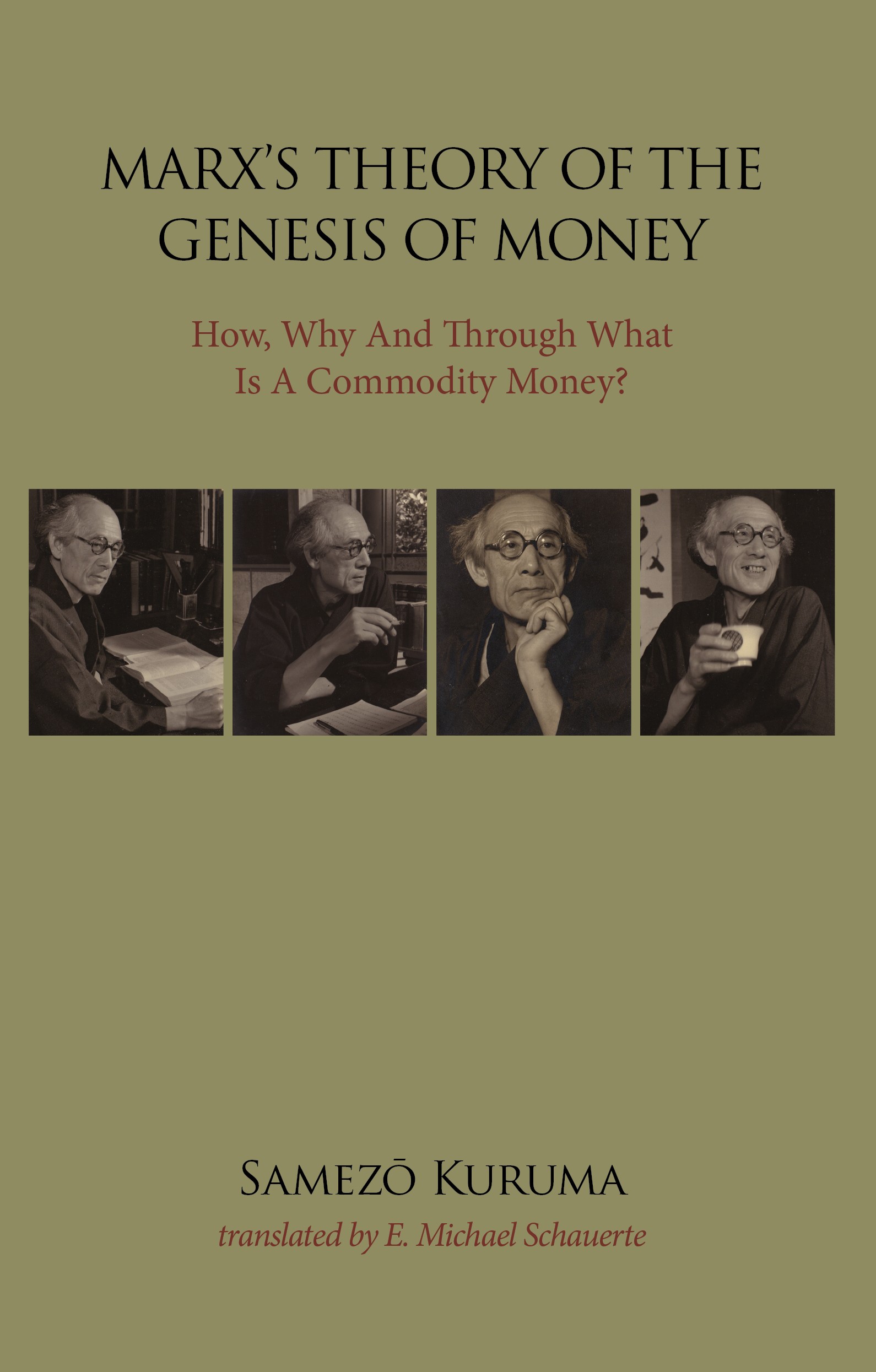Samezō Kuruma (1957)
Source: Kachi keitai ron to kōkan katei ron; published by Iwanami Shoten (Tokyo) in 1957
Translation copyright: E. Michael Schauerte
HTML markup: Andy Blunden

This translation of Kuruma's 1957 book Theory of the Value-Form Theory of the Exchange Process was published in 2009 as Part one of a book entitled Marx's Theory of the Genesis of Money. That book contains, in Part two, a discussion between Kuruma and Teinosuke Otani – first published in the 1979 book Kahei-ron (Theory of Money) – that also discusses the Marx's elucidation of the value-form and exchange process, while also examining his "theory of fetish-character" presented in Section four of the first chapter of Capital.
Preface
1. Part 1
2. Part 2
References
This is a collection of four articles published in the Hosei University journal Keizai shirin (The Hosei Economic Review) as a series entitled: “Theory of the Value-Form & Theory of the Exchange Process.” The first article appeared in Vol. 18, No. 1 (January 1950), the second in Vol. 18, No. 3 (July 1950), and the third in Vol. 19, No. 1 (January 1951). Up to that third article the series was proceeding as planned, but in the spring of 1951 I suddenly fell ill before completing the planned fourth article. Even though I recovered in a few months, it seemed too much of a chore to complete that article (perhaps owing to my laziness), and it remained unfinished for a long time although still in the back of my mind. The first three articles had dealt with the three main objections Kōzō Uno raised against the view, held by me and others, that it was natural for Marx to abstract from the role played by the want of the commodity owner in the theory of the value-form (unlike the case in the theory of the exchange process).
My intention for the fourth article was to then advance my own ideas regarding the difference and relation between the theory of the value-form and the theory of the exchange process. I had already formed my basic view on the relation between those two theories some time earlier, so the difficulty was merely how to express it effectively in writing. I had discussed my view with colleagues on a number of occasions and also presented my ideas at a symposium of the Japanese Society for the History of Economic Thought held in 1954 at Yokohama University, so I felt that someone else would eventually pursue this issue even if I did not go to the trouble of doing it myself. I did end up tackling it again in the autumn of 1955, however, when the editors of the journal Hosei asked me to contribute to a symposium they were planning. Unlike the earlier symposium at Yokohama University, where I had not been able to fully express my views given the limited time available, I was to be allotted three hours to speak and a stenographer would also be present. I hoped to take advantage of the opportunity in order to complete the article that had remained unfinished for so long. After my presentation, I revised the written transcript of it in the summer of 1956, which was necessary in part because I had delivered it without relying on notes; and this revised version was published in Keizai shirin, Vol. 24, No. 4 (October 1956) as the fourth article in the series.
The content of the fourth article overlaps with that of the previous three articles to some extent because it was based on a separate presentation. Despite its different style, which may seem out of place compared to the other three articles, the fourth article has a systematic structure that may make it easier to understand than if it had been rewritten entirely as a new article. Here I have reversed the original order of the articles, with the fourth article positioned as Part 1 and the three earlier articles as Part 2. One reason for reversing the order is that each of the first three articles begins by presenting the ideas of Kōzō Uno before then responding to his criticism, whereas it seems more appropriate to begin the book by first presenting my views first and then addressing Uno’s criticism.
In editing the book, some revisions and additions have been made to the earlier articles – along with “technical” revisions such as correcting typographical errors, altering inappropriate expressions, and incorporating footnoted material into the main body – but none of the changes made alter the gist of the subject matter, as they mainly involved adding passages from Marx’s writings to elaborate a particular point or provide a point of reference.
February 17, 1957